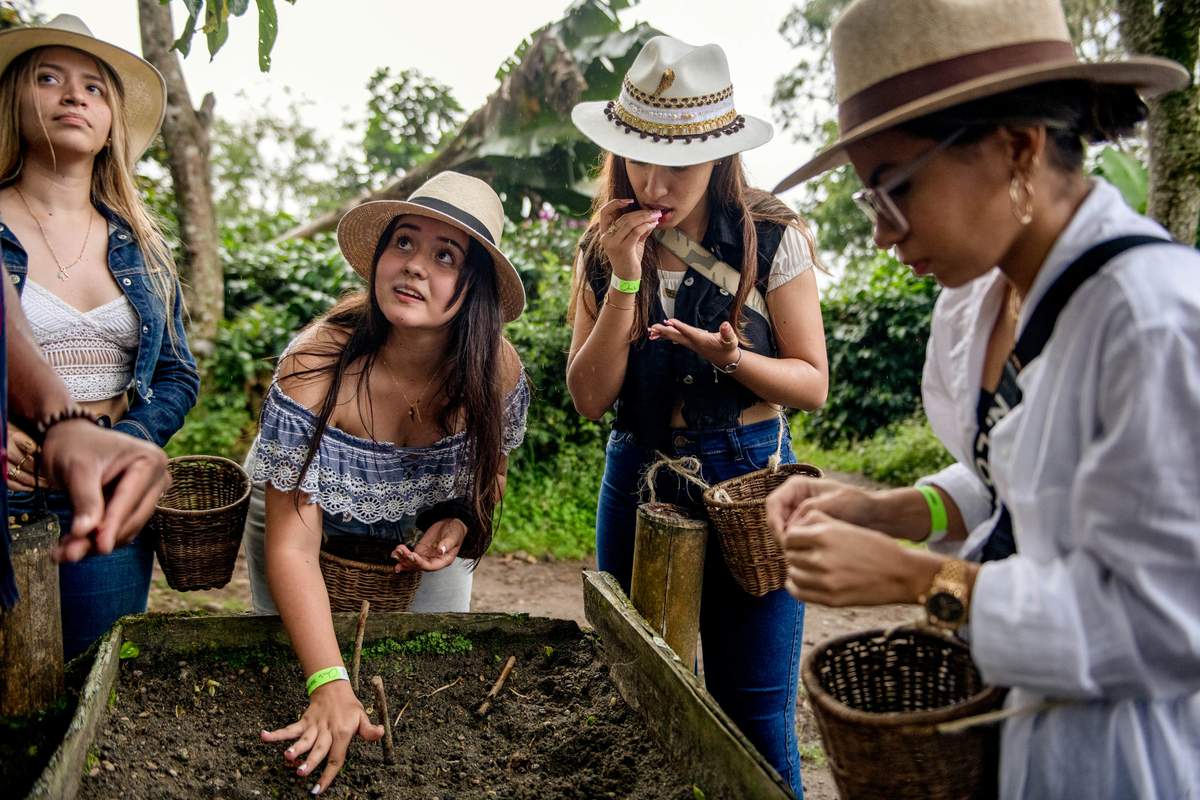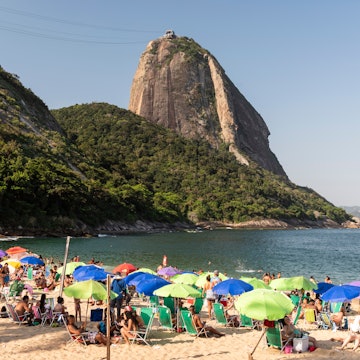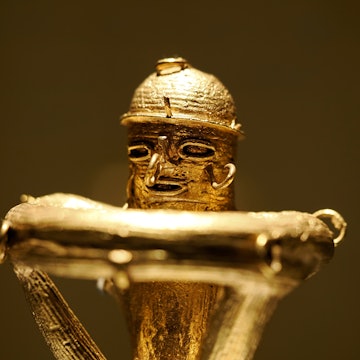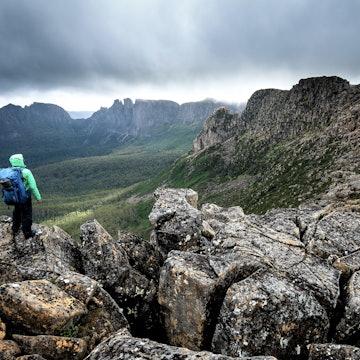
How these Colombian Christmas traditions bring family together

Nov 19, 2019 • 8 min read

Parque Norte gets families into the holiday spirit with free evening festivities and a chance to meet Santa Claus © Laura Watilo Blake
When my husband and I adopted our daughter from Colombia in 2016, we vowed to maintain a relationship with her birth country and culture. On this particular occasion, we’ve come back for a visit at the start of the Christmas season, so we can learn about some of the country’s holiday customs and incorporate them into our own. The trip begins in Medellín for the annual holiday lighting ceremony in November and ends in Bogotá with the Día de las Velitas, celebrated each December 7th and 8th.
My daughter, Kinley, erupts with pure joy as the verdant hills of Antioquia appear between fluffy clouds as our plane comes in for a landing at José Maria Cordova International Airport just outside of Medellín. She excitedly holds up her look-alike doll to the plane window so it can get a better view. “Look, Anna!” she exclaims. “This is where I’m from."

Even though she was born 245 miles away in Bogotá, Kinley claims all of Colombia as “my place.” In reality, this is her first visit to Medellín, where we’re greeted with the spring-like temperatures that the Antioquia region is known to experience year round.
Medellín won't have a white Christmas – instead, we have to contend with Medellín’s daily rain showers. Luckily, my husband, Chris, remembered to carry the umbrella, as the water works begin just before organizers flip the switch on Medellin’s world-famous annual lighting display on the last weekend of November, an event known as the Alumbrados Navideños.
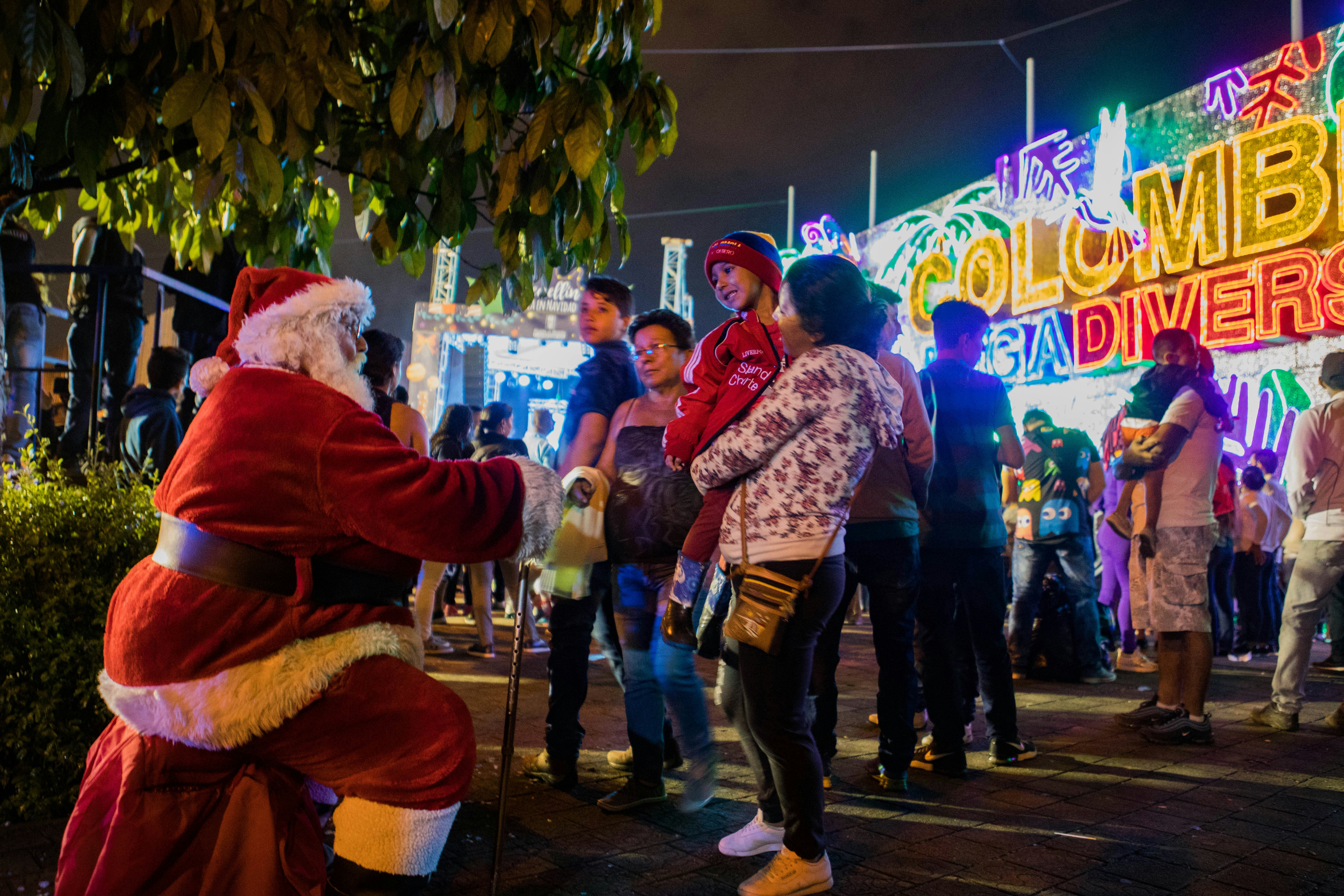
Let there be light at the alumbrados
Diez, nueve, ocho . . . As the second hand on the clock inches toward 7:30 p.m., a light rain begins to fall over the crowd gathered at the entrance to the Parque Norte, a family-friendly theme park by day that opens its doors for free after dark during the holiday season. Everyone is a bit soggy, but the untimely shower hasn’t dampened anyone’s spirits.
There’s a palpable sense of sweet anticipation for the alumbrados, a tradition which started in 1955 and has grown into one of the most impressive holiday lighting exhibitions in the world. Millions of LED lights adorn thousands of handmade figures woven with metallic ribbon which are scattered throughout the city, from the Parque del Río along the Medellín River to the top of Cerro Nutibara, home to the Pueblito Paisa, a kitschy replica of a traditional Antioquian town from the colonial era.
Tres, dos, uno . . . When the bright lights suddenly fill the night sky, spectators flood through the park gates and follow a path encircling a manmade lake. We wandered – and sometimes sprinted to keep up with our daughter– past giant glowing flowers, cacti, butterflies and animals, while a parade of costumed characters pass by, accompanied by a marching band. The música de Diciembre (December music), which encompasses different musical genres from cumbia to salsa, has hit the streets and the air waves, which means the country-wide celebration won’t stop until the Christmas decorations come down on January 7.

It's always darkest before La Alborada
“Le llegó su Diciembre" (your December has arrived) is a common saying in Colombia. It basically means all good things must come to an end, so live it up while you can. Depending on how it's used, it can describe something positive, like finally getting your December prima – an extra paycheck that Colombian employers must give their employees. It can also describe something bad, like a criminal who finally gets caught. For example, the infamous drug lord Pablo Escobar's December arrived on a rooftop in Medellín back in 1993, ending a violent chapter in the city's history.
The actual month of December literally arrives with a bang in Medellín. The sound of explosions echo across the Aburrá Valley as we are hiking along a section of the Camino de la Vida, a pedestrian walking trail high up on the Pan de Azúcar mountain slope. Before I get too worried, someone on the path tells us it has become a controversial custom to ignite gunpowder and explosives to mark the first day of December (it also happens to be Escobar's birthday). While the city of Medellín has outlawed this activity known as La Alborada (the dawn), it continues to endure with some residents.

What to eat in Colombia
Normally I carry lots of snacks to give Kinley when we're on the go, but with the sheer number of street food carts in Colombia, I can travel light knowing there will be something delicious and quick right around the corner. Before perusing the art at Museo de Antioquia, we share an oblea (a sweet wafer sandwich slathered with arequipe, which is similar to dulce de leche). After wandering among Botero's plump bronze figures at the Plaza de las Esculturas, we stop for pinchos de pollo (chicken skewers) served with a side of arepas (disc-shaped corn cakes).
This typical fare can be found year-round, but there are certain holiday foods that trigger nostalgic sentiments, especially buñuelos (fried cheese fritters) and natilla (custard). Boxed mixes for both are piled high to the ceiling in the local grocery stores. Meanwhile, bakeries place their friers on the sidewalk to entice passersby with the smell of piping-hot fried dough.

“This is when it feels like Christmas to me,” says a woman loading up on treats at the Salon Versalles, located along Medellín's Calle Junín, a pedestrian-only passage that stretches south two blocks from the Parque Bolívar in El Centro. "These foods remind me of the Christmas's of my childhood."
Las Novenas and Aguinaldos
All these delectable holiday treats are devoured at the social gatherings and parties of the season, especially during las novenas, which take place in the nine days leading up to Christmas. Family and friends gather to recite prayers, sing villancicos (Christmas carols), and play holiday games called aguinaldos. One such game is Tres Pies (Three Feet), where each player tries to put their foot between the feet of other players without being noticed. Now that we've introduced the game back home, Kinley and the other kids in our circle love catching adults with their feet apart.

By the time the novenas arrive this year, we'll be back home in the States. But we have plenty of time to experience the camaraderie of the season once we land in Bogotá, where we have a whirlwind of social visits with all the friends we've made since becoming a family. They've become our support system and our daughter's link to Colombian cultural traditions that we don't know anything about.
For example, when Kinley lost her first tooth, my friend Clara wrote me on WhatsApp to ask if the Ratón Pérez had left a treat or money under her pillow. Throughout Latin America, it's a mouse—not a fairy—that makes the switch.

Where to buy Christmas gifts in Bogotá
Another friend, Luz Clara, invites us on her annual shopping excursion to Expoartesanías, a massive handicraft fair that takes place over two weeks every December (this year it's Dec. 4-17, 2019). The Colombian government provides travel and accommodations for indigenous artisans so they can come to the capital city to sell their wares alongside designer brands and international craftspeople.
The event, which occupies six giant pavilions at the Corferias convention center, can be overwhelming, especially for a small child. Before the eventual meltdown ensues, we load up on multiples of wooden toys, musical instruments, beaded necklaces, woven baskets, Wayuu mochilas (woven shoulder bags from the northeastern corner of Colombia) and earrings made with dyed silk cocoons. Luckily, I have room in my suitcase, which had been packed with the presents I brought from home.

Día de las Velitas (Day of the Little Candles)
On the night before we head back to the States, we are keen to see what the Día de la Velitas is all about. The public holiday gets underway on the evening of December 7th with people placing candles and paper lanterns on their balconies, porches, sidewalks, streets, and in plazas and parks. The activity honors the Virgin Mary and the Immaculate Conception, which is commemorated the next day among Catholics.
Because it's close to our hotel, we make our way to the Parque Usaquén, best known for the Mercado de las Pulgas (Sunday flea market). On the way, we pick up a pack of tapered candles and matches at Carulla, a Colombian grocery chain a few blocks away. When we arrive at the park, there's a low hum of excitement hanging over the people gathered on the lawn to burn their candles amid a smattering of lighted Christmas displays.

We find an empty patch of grass and begin the process for ourselves. As we light the candles one by one, a fiery glow starts illuminates Kinley's face revealing an even brighter smile. She comes in close to give me a hug, then says, "I love you." In that moment, I'm overcome with a rare display of emotion that the holidays have a tendency to stir up. I couldn't be more thankful for the precious memories we'll cherish from this trip to Colombia and the new holiday traditions we will share together in the years to come.
To plan your own custom Colombia Christmas, you can find a detailed list of Christmas displays, activities and events around Bogotá in December at rutadelanavidad.com or download the app Navidad en Bogotá. There are all sorts of celebrations, markets, and traditions to take part in throughout the month, so simply search according to the dates you'll be traveling.
Get more travel inspiration, tips and exclusive offers sent straight to your inbox with our weekly newsletter. Subscribe to our Lonely Planet Kids newsletter and get 30% off your first Lonely Planet Kids book purchase.





